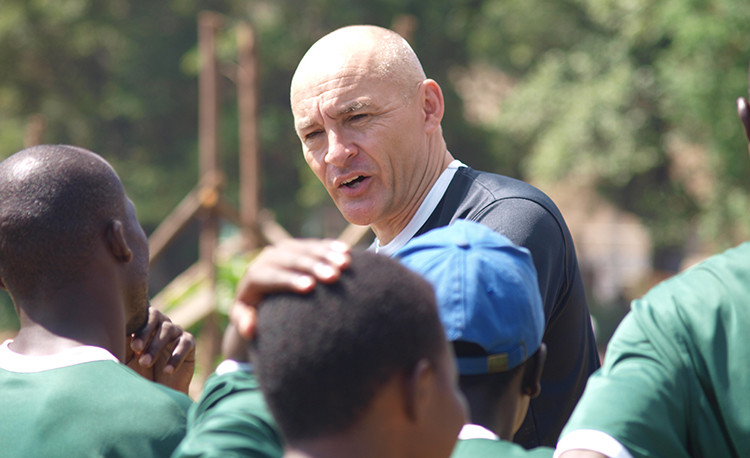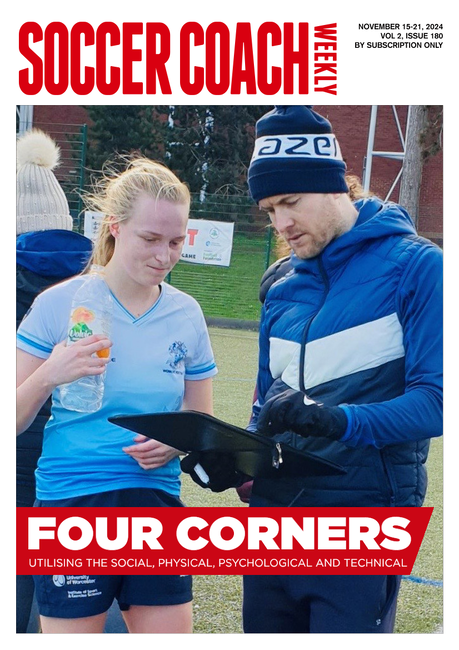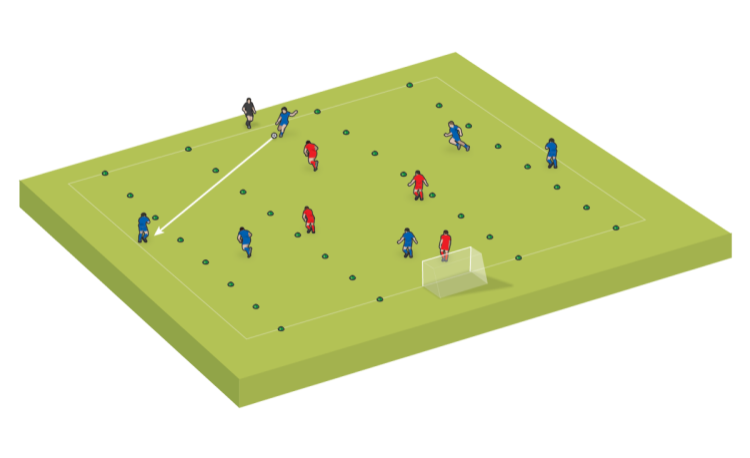How to make your sessions appropriate for your players
When designing sessions, it can be easy to overlook the players’ developmental level. Ian Barker sets out a blueprint for what to include and at what ages.
In coaching, it is important to evaluate your players carefully and determine their physical, cognitive and socio-emotional abilities.
Taking the time to do this will increase the value and enjoyment of any training session.
An important balance to work for is the one between the players’ perception of their abilities and the challenges they have been set.
If the players feel the challenge is too great for their ability, stress and anxiety occur. If, on the other hand, they feel the challenge is not enough, they will become frustrated and bored.
The importance of this balance applies at all levels of the game, but especially at grassroots, where a coach should be striving for enjoyment and player retention as much as performance outcomes.
The most beneficial coach education award I have experienced came after completing my USSF A license and other ’elite’ badges.
The US Youth Soccer National Youth License applied academic research in child development to how we teach, and emerged as a foundational coaching course.
Assessing how to conduct developmentally appropriate training for U6s, U8s, U10s and U12s supports the way training senior players can be better managed and prepared.
"A young player toeing the ball may just reflect their physical capability..."
Consider the technique of an instep drive. An effective instep drive requires a firm planted foot addressing the ball, pointing the toe, locking the ankle of the kicking foot and balancing as the leg draws back.
Seeing a young player toeing the ball will encourage a coach to correct - however, this may just reflect their physical capability.
Appreciating physical appropriateness can apply to field size and technical emphasis in training. If players do not possess the physical strength to serve a flighted ball from the corner of the field toward goal, then the practice of the technique is redundant.
Understanding the physical developmental appropriateness of training should mean we spend much more time with young grassroots players on physical literacy, balance and agility, close control and small technical practice.
We explain to young players that the object of the game is to score goals - or at least, more than the opposition. At a fundamental cognitive level that means each engaged player will go to the ball - a 4v4 with U6 players is effectively a 1v7.
The coach’s response to this is often "spread out" or "find space". The information is not wrong in and of itself, but it is not appropriate.
Instead, the coach should observe and identify the moment when a player intentionally stays away from the melee to potentially receive the ball in space. It is the moment a player is developing, in their minds, the concept of space.
Using this player as a good example for the others is effective coaching, based on observation, affirmation, and patience.
Important game considerations such as dispersal, compactness, transition, formations and systems are the responsibility of the coach to teach within the context of their players’ developmental level.
Most parents will identify with the idea that a young child can be very self-centered before they develop friends.
Similarly, most coaches of young players will have had the experience of the players not being as team-centric and committed to collective success as they may hope. This is consistent with research on how children develop socio-emotionally.
Implications for the coach are that they must consider how to manage collaborative and opposed activities in training - whether to train individually, in groups, or in full team numbers.
If we support developmentally appropriate training, a simple blueprint for the youngest age of grassroots players emerges, as per the panel on the right of the page.
The modern coach is one who manages more than the fundamentals of a technical session. This applies to all levels of the game.
The modern coach is expected to understand effective communication, personnel management, periodization, individual development planning and so on.
These tasks have often been referred to as the ’soft skills’ of coaching - but I think it is more informed to call them the ’necessary skills’ of coaching.
Coming to a personal understanding of how to consider and apply a developmentally appropriate approach to coaching is very rewarding.
What defines an effective modern coach is one who is efficient in the use of time and resources. That efficiency can be found in setting the challenges of training that stretch players but are attainable in relation to their developmental stage.
"If we support developmentally appropriate training, a blueprint emerges..."
My exposure to the US Youth Soccer National Youth License was the single biggest positive impact in my coaching. It helped me enjoy youth coaching and allowed me to appreciate the players more.
At senior levels, it encouraged me to understand players’ physical ability, their game understanding and their broader motivations and commitment.
In some cases, it did mean I wasn’t placed with the best group for my skillset and those of the players. More often, it meant I was able to meet players at their level, set them challenges and put them into competition in a highly intentional and effective way.
Think about your players from the perspective of the developmental appropriateness of what you train and ask of them.
If you can do this and adjust accordingly, then you, and the players, will derive more enjoyment from your sessions - and player development and performance outcomes will improve as a result.
Related Files
A developmentally appropriate coaching blueprint
U6s: One ball for every player; lots of individual technical practice; 1v1 challenges; lots of patience from the coach allowing for multiple breaks and activity changes.
U8s: One ball between two players; technical exercises including passes; collaborative and combative challenges; introducing basic ideas of support; 2v2 games.
U10s: One ball to a small group; technical work on dribbling, passing and combination play; decision making around in-possession and out-of-possession, repetitive small-sided game situations.
U12s: Emerging into similar elements of a senior player session; small group to expanded numbers to full number activity; technical emphasis both individual and small group; physical readiness; managing challenge to provide opportunity for success and adversity.
Newsletter Sign Up
Coaches Testimonials

Gerald Kearney, Downtown Las Vegas Soccer Club

Paul Butler, Florida, USA

Rick Shields, Springboro, USA

Tony Green, Pierrefonds Titans, Quebec, Canada
Subscribe Today
Discover the simple way to become a more effective, more successful soccer coach
In a recent survey 89% of subscribers said Soccer Coach Weekly makes them more confident, 91% said Soccer Coach Weekly makes them a more effective coach and 93% said Soccer Coach Weekly makes them more inspired.
*includes 3 coaching manuals
Get Weekly Inspiration
All the latest techniques and approaches
Soccer Coach Weekly offers proven and easy to use soccer drills, coaching sessions, practice plans, small-sided games, warm-ups, training tips and advice.
We've been at the cutting edge of soccer coaching since we launched in 2007, creating resources for the grassroots youth coach, following best practice from around the world and insights from the professional game.








